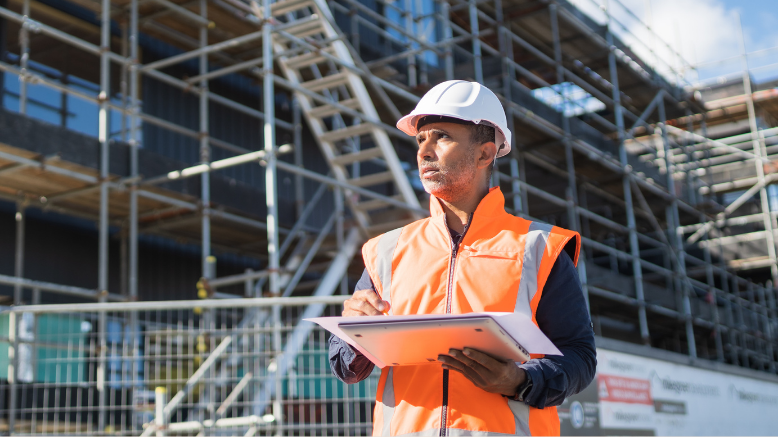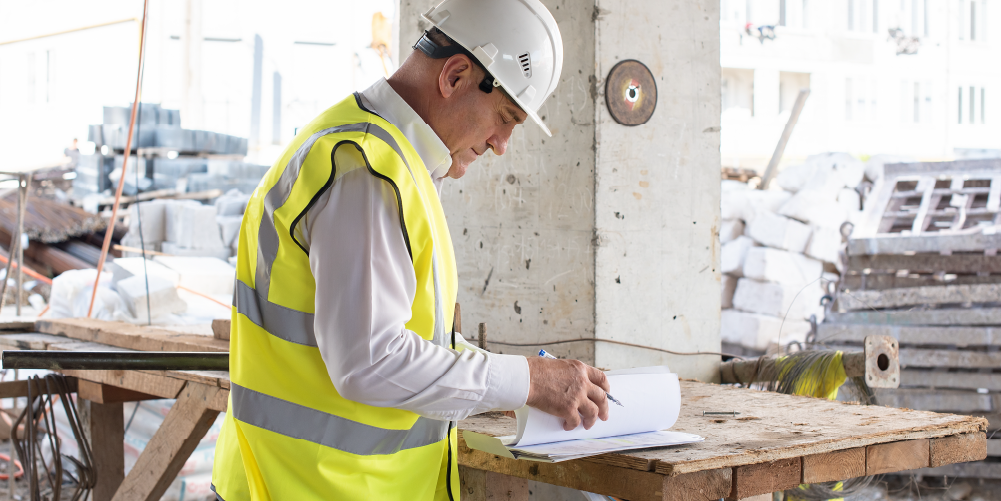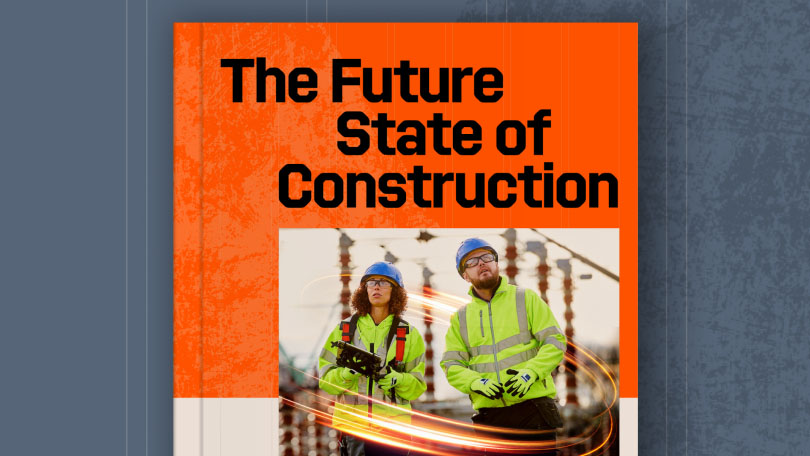— 7 min read
What is BREEAM?

Last Updated Aug 28, 2025

Daniel Kavanagh
Solution Specialist, Industry Compliance
15 articles
Daniel Kavanagh is a Senior Strategic Product Consultant at Procore, based in Dublin, Ireland. Daniel is a results-oriented project manager with a passion for building relationships and exceeding client and management expectations, with career experience in project management, systems implementation, technical design and architectural finishes. Daniel has been a member of the construction industry since 2014, and graduated from the Carlow Institute of technology.

Nicholas Dunbar
Content Manager
62 articles
Nick Dunbar oversees the creation and management of UK and Ireland educational content at Procore. Previously, he worked as a sustainability writer at the Building Research Establishment and served as a sustainability consultant within the built environment sector. Nick holds degrees in industrial sustainability and environmental sciences and lives in Camden, London.
Last Updated Aug 28, 2025

The Building Research Establishment Environmental Assessment Method (BREEAM) is an internationally recognised certification standard for assessing the sustainability and environmental performance of a building. It evaluates many different parts of buildings, from the initial design stage through to its completion. Some examples of what BREEAM evaluates include:
+ Water usage
+ Waste management
+ Pollution and emissions
+ Energy efficiency
+ Health and wellbeing
+ Transport and location
Developed by the Building Research Establishment (BRE) in 1990, BREEAM is widely accepted as being one of the most thorough building sustainability certifications available. For building owners, achieving a high assessment score brings many benefits. We will examine these in more detail later on in this article. There are six different BREEAM ratings that an assessor can award a building. They each have a star rating and are based on a percentage score, ranging from unclassified (0 stars, <30%) to Outstanding (5 stars, >85%).
Table of contents
Types of BREEAM Certification
There are six BREEAM schemes in total, with each representing different types of BREEAM standards that apply to different types of construction projects. These include:
+ BREEAM New Construction: Applies to newly built assets, using a framework to help design and build projects with sustainability built in from the outset.
+ BREEAM In-Use: Supports projects that deliver sustainability improvements to buildings that are already in use.
+ BREEAM Communities: Provides a framework for the design, planning or regeneration of communities to improve their sustainability performance.
+ BREEAM Refurbishment and Fit-Out: BREEAM’s Refurbishment and Fit-Out standard supports the assessment and implementation of sustainability features when refurbishing and fitting out properties.
+ BREEAM USA: The BREEAM USA standards, developed by BRE Global, let developers in the United States assess and apply BREEAM frameworks to American construction assets.
+ BREEAM Infrastructure: Supports sustainability assessments and certifications for civil engineering and infrastructure projects, such as roads and railways.
Learn about the future of the built environment - Read Procore's Future State of Construction report
Learn how contractors, subcontractors, and project teams can take advantage of new opportunities to boost efficiency and profitability over the next decade. Download the report to get your roadmap to the future state of construction.

How to get BREEAM Certified
The BREEAM website offers guidance on how to get certified and offers a useful six-stage approach to follow:
Stage 1: Choose your scheme
There are six different BREEAM schemes that you can choose depending on the stage that you are at in the construction process and the type of project. Choose your scheme to match the project you are working on.
Stage 2: Contact a licensed assessor or auditor
When you’ve chosen a scheme, it’s time to contact an assessor or auditor to carry out the review. You can find a licensed BREEAM assessor or auditor on the GreenBookLive online database.
Stage 3: Carry out a pre-assessment
Before your auditor or assessor carries out a full assessment, you can ask them to predict a likely score using the Pre-Assessment Estimator. This estimator can help you to get an idea of your baseline score
Stage 4: Register for the assessment
When it’s time to start the full assessment, your auditor or assessor will register the project for you. You should ask them to do this as early as possible.
Stage 5: Get your certification
At this stage, your assessor or auditor will carry out the assessment and submit the evidence to BRE, so that the submission can be checked for accuracy. Once BRE has checked everything is correct, your certificate will be issued.
Stage 6: BRE lists your building on GreenBookLive
When you finally have your certification, the BRE will list your certified building and assets on the GreenBookLive database.
Benefits of BREEAM
BREEAM certification offers several benefits, from helping to improve energy efficiency to reducing operational costs for building owners. The certification also helps in making buildings more marketable by aligning them with ESG (Environmental, Social, and Governance) goals, which helps in attracting investors.

Daniel Kavanagh
Solution Specialist, Industry Compliance
Procore Technologies
There are a wide range of benefits of getting a building BREEAM-certified, for both the environment and the commercial value of a build. Some of these benefits include:
Increased Energy Efficiency
Improving the energy performance and efficiency of a building is a key focus of the BREEAM frameworks. Lower energy consumption has a positive impact for both the environment and the occupants and people that use a finished building.
Reduced Operating Costs
The impact of lower energy consumption doesn’t just mean a more environmentally friendly building — it also means that the occupants or owners of the finished building have lower energy costs, too. This makes the building more attractive to buyers and investors.
Increased Property Value
A high BREEAM rating is an attractive feature for investors and prospects looking to add to their portfolio. A 2023 report by JLL found that, “A BREEAM certificate of any type leads to an average capital value premium of 20.6%.”
Better Quality of Life for Occupants
One of BREEAM’s areas of focus is to improve the environmental quality of building interiors, which help provide health and well-being benefits for occupants or building users. This includes better insulation, improved air quality, and better natural lighting, which have positive impacts on both physical and mental health.
Meeting Corporate ESG Goals
By working towards a BREEAM framework, clients and construction companies adopt practices that also help them to meet corporate ESG targets and even regulations such as the Corporate Sustainability Reporting Directive, Part L, and also feeds into a company’s EU Taxonomy compliance.
Achieving BREEAM certification alleviates concerns about regulatory compliance. By meeting BREEAM's stringent standards, projects automatically align with regulations such as the UK's Part L, which governs energy conservation in buildings.

Daniel Kavanagh
Solution Specialist, Industry Compliance
Procore Technologies
Practices such as local sourcing, reduction of waste, reduced emissions, and promotion of biodiversity all contribute towards these goals. Documenting these practices for BREEAM certification can be helpful for providing evidence towards other sustainability goals.
Common Criticisms of BREEAM
While there are many benefits to gaining a BREEAM certification, there are also some common criticisms that can discourage people from starting the process. These criticisms include:
High Costs
The process of certification comes at a relatively high cost. This can be a barrier, especially for smaller companies. However, when you compare this to the increase in capital value premium and the reduced operational costs, many companies can justify this initial expense. There are also government grants that companies can apply for to help reduce the costs.
While the initial costs of implementing features like green roofs and high-efficiency appliances can be substantial, integrating BREEAM early in the design process avoids costly retrofitting later. Early planning ensures these sustainability measures are seamlessly incorporated.

Daniel Kavanagh
Solution Specialist, Industry Compliance
Procore Technologies
Complexity and Bureaucracy
Getting a certification comes with a lot of paperwork and documentation of evidence, which can be time-consuming and present a learning curve for teams who have never done it before. Many construction teams already feel significant time pressures, so adding more admin to workloads can feel unrealistic or limiting.
Prescriptive Scoring System
The BREEAM frameworks have very specific criteria to score a building’s performance. Focussing on the rigid criteria can lead to construction teams feeling discouraged to try more innovative or cutting-edge sustainability improvements, as they may not count towards the final score.
Innovative BREEAM Practices
Incorporating the frameworks into a construction project encourages the use of many modern and innovative methods for promoting sustainability, environmentally friendly practices and wellbeing. These can include:
+ Vertical gardens
+ Green walls and moss walls
+ Excellent insulation and ventilation
+ Recycling of greywater and rainwater
+ Use of biofuels
+ Resource efficiency
+ Green roofs
+ On-site renewables
+ Geothermal heating and cooling
One creative sustainable practice within BREEAM-certified buildings is the implementation of green roofs. These roofs use plants like sedums instead of traditional materials such as torch-on felt or cladding. This approach not only provides insulation but also creates habitats for bees and birds, contributing to biodiversity.

Daniel Kavanagh
Solution Specialist, Industry Compliance
Procore Technologies
FAQs
Is BREEAM mandatory?
BREEAM is not widely a mandatory certification — most of the time, it is a voluntary process. However, it can be mandatory for some projects, as local planning authorities and other organisations may require a BREEAM certification. For example, the University of Cambridge has a BREEAM policy that requires both new builds and refurbishments to achieve an Excellent rating.
Can emerging technology help?
Emerging technologies such as Internet of Things (IoT) technology and artificial intelligence (AI) can help with the BREEAM certification process. IoT sensors can provide data using sensors, which can support the documentation and evidence process. AI algorithms can help to analyse data, which can also help with the reporting process.
How long does the BREEAM certification process take?
It depends on the project and how complex and large it is. Getting a certification can take anywhere from several months to over a year.
Categories:
Written by

Daniel Kavanagh
Solution Specialist, Industry Compliance | Procore Technologies
15 articles
Daniel Kavanagh is a Senior Strategic Product Consultant at Procore, based in Dublin, Ireland. Daniel is a results-oriented project manager with a passion for building relationships and exceeding client and management expectations, with career experience in project management, systems implementation, technical design and architectural finishes. Daniel has been a member of the construction industry since 2014, and graduated from the Carlow Institute of technology.
View profileReviewed by

Nicholas Dunbar
Content Manager | Procore
62 articles
Nick Dunbar oversees the creation and management of UK and Ireland educational content at Procore. Previously, he worked as a sustainability writer at the Building Research Establishment and served as a sustainability consultant within the built environment sector. Nick holds degrees in industrial sustainability and environmental sciences and lives in Camden, London.
View profileExplore more helpful resources

Construction Management Contracts: A Complete UK Guide
Managing construction contracts can lead to an extensive physical paper trail. Sharing contracts, getting signatures and managing timelines is difficult when teams and clients are scattered across job sites and...

Key Differences Between Contractors & Subcontractors
In UK commercial construction, main (or principal) contractors engage directly with project owners to deliver complete construction programmes, while subcontractors perform specific scopes of work under the main contractor’s management....

The Role of RFPs in UK Construction Projects
Requests for Proposals (RFPs) are a core document for construction procurement in the United Kingdom. Effective RFPs align expectations, establish clear evaluation criteria, and create accountability between clients and contractors....

Financial Management in Construction Projects
Effective financial management can make or break construction projects. Teams that master budgeting, cash flow and cost control are better positioned to deliver projects on time, within budget and with...
